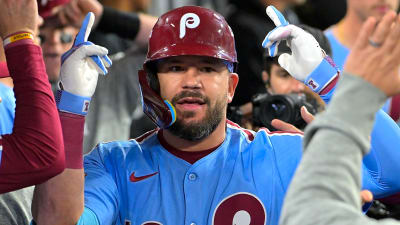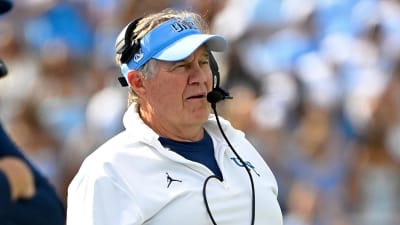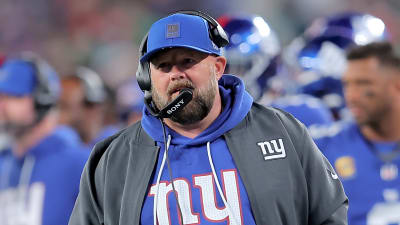
Braeden Cootes already beat the odds in cracking the Vancouver Canucks roster – very unexpectedly, we might add – as an 18-year-old fresh out of the 2025 NHL Entry Draft. But if he’s going to stay up with the Canucks beyond the bounds of the standard nine-game audition, he’s going to have to beat another, equally daunting set of odds.
This year’s 15th overall draft pick earned this opportunity, fair and square. Past a certain point, the Vancouver decision-makers just had no reason to cut him from the team, and every reason to keep him around.
But now we’re on to the 2025-26 regular season itself, and the game has changed. That has us wondering about the threshold which Cootes would have to pass to stay in the big leagues not just for nine games, but for the entirety of the campaign. In other words, what level of performance would it take for him to never go back to juniors?
First, we’ll have to take a look at how Cootes has performed thus far through two games – with the obvious caveat that anyone’s first two NHL games do not define them, especially when that individual is still a teenager.
Cootes’ first NHL game came on Thursday’s home opener against the Calgary Flames. He only played 11:14, went pointless, and was on the ice for the Flames’ only goal in a 5-1 win. That might not sound all too impressive on paper, but there’s important context that needs including. The game got out of hand fairly quickly on due to dueling hits-from-behind, and head coach Adam Foote later spoke about how the preponderance of penalties and Calgary’s “running around” resulted in Cootes missing some shifts.
Overall, Cootes looked calm and poised, if unspectacular, in his first official NHL action. He survived, at the very least.
His second game, on Saturday against the Edmonton Oilers, was a bit of a step back for both team and player. This time around, with the Canucks trailing for the majority of the game, Cootes was held to just 9:53 in ice-time.
This was not unique, as Jonathan Lekkerimäki played just 9:38 himself. With neither player featuring on the penalty kill or the first unit power play, and another game full of penalties, opportunities were limited.
But Cootes was also visibly overwhelmed at times, leading to some questionable decisions. At one point, he misplayed a clear and received a public reprimand from Tyler Myers on the bench. Despite not earning a minus in this one, it was – all things considered – a worse outing for Cootes than his first game.
One can never draw too many conclusions from a two-game sample of stats, but so far we see Cootes with some pretty dismal fancy stats, including a 39.39% Corsi rating, a 14.44% Expected Goals rate, a 23.08% control of scoring chances, and a 0.00% control of high-danger chances, in particular.
All this, in minutes that are decidedly sheltered against a decidedly low quality of competition.
Again, none of this is meant to draw any conclusions from. It’s only been two games, and in this case, it’s only been two games for an 18-year-old in the National Hockey League. With one of those games coming against the best player in the world and his only-slightly-less-good buddy, to boot.
We’re just here to talk about where Cootes needs to go from here.
If things continue as they have, with Cootes managing to survive, but perhaps not thrive, as an NHL player, we all know where this is going. Cootes will play his nine games – maybe not all in a row, as we imagine there will be some pressbox learning time interspersed throughout – and then he’ll be returned to Seattle of the WHL sometime in late October, or maybe early November (and then hopefully traded to a better WHL team, but that’s a story for another day.)
What would he need to do in order to achieve a different outcome?
We won’t bother talking about points. Cootes’ production is essentially irrelevant at this point as he tries to master the subtler components of the game. Sure, if he’s still pointless after he hits the nine-game mark, well, then it’s going to be hard to justify keeping him around. But beyond that, there’s really not much of a point-threshold we’re thinking of. A couple points here and there is all that could reasonably be expected.
What will have to increase is that ice time. There’s just no reason to keep a teenager playing 10 minutes a night when they could be playing 25 down at the junior level. If Foote can’t find cause to get Cootes up into that 12-14 minute-per-night range, at the very least, he will eventually need to be demoted.
Then it’s a question of what he does with those minutes. As we said, it’s a question of thriving, not surviving. Let’s focus on faceoffs for a moment. Thus far, they haven’t got particularly well for Cootes, who has a 36.4% win-rate through two games (still higher, we’ll note, than Elias Pettersson’s.)
We don’t need Cootes to turn into the next Manny Malhotra over night or anything. But you would want to see that win-rate start to climb over the next few outings, as opposed to seeing Cootes continue to get buried. If he continues to get buried, it seems wisest to send him back to the WHL to refine his skills on the dot against a lesser class of opposing centres.
That’s pretty much going to be our answer across the board here. We don’t need to see Cootes become a Selke-worthy centre anytime soon, capable of taking on hard matchups and keeping his head above water. But we do need to see him start to keep his head above water on a more regular basis, and if that happens, it should show up in stats like Corsi and Expected Goals, which we’d want to see drift closer and closer to break-even.
That’s especially true of chance generation. It is, ultimately, a centre’s job to drive play for their line. That 0.00% control of high-danger chances certainly doesn’t look good in that regard. Cootes making the flip from surviving to thriving would almost certainly correlate with his generating more offensive chances for his linemates. If he cannot start to do that, again, he’s better off working on that skill down in the WHL, and his linemates up here are probably better off working with someone further along the development path, like Aatu Räty or Max Sasson.
One thing needs to be made clear here, and it’s this: the word ‘disappointment’ should never even enter the realm of the discussion surrounding Cootes this season. Every moment he’s in the NHL is an achievement well over and above any reasonable expectations made when he was drafted a few months ago.
Have Cootes’ first two games gone ideally? No. Does he have a lot to do to prove he deserves to stay with the Canucks this season? Absolutely.
But the book on Cootes, even the books on 2025-26 Cootes, is not yet written. The threshold for him to stay up may be high, but overcoming high thresholds is already proving to be a Braeden Cootes specialty. Who’s to say his next great leap forward isn’t going to come in the next couple of games?
More must-reads:
- NHL Week 1 reactions: What’s real — and what's a mirage?
- Bijan Robinson's record-breaking pace should make him early OPOY favorite over fellow star RB
- The 'NFL total touchdown pass leaders' quiz
Breaking News
Trending News
Customize Your Newsletter
 +
+
Get the latest news and rumors, customized to your favorite sports and teams. Emailed daily. Always free!








